Erich Teppan
Large-Scale Benchmarks for the Job Shop Scheduling Problem
Jan 25, 2021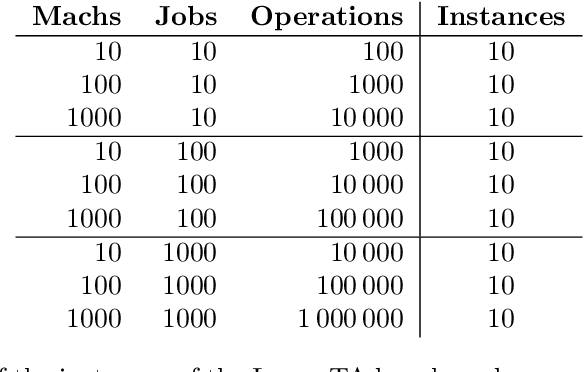
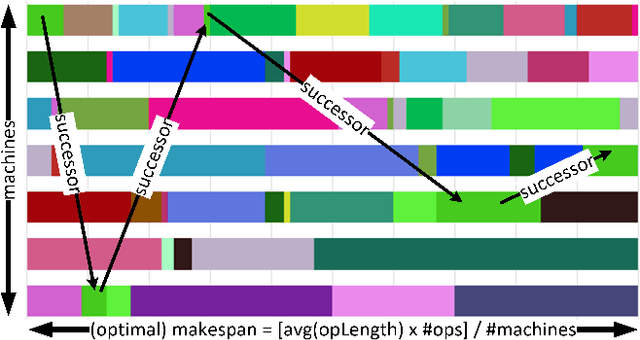
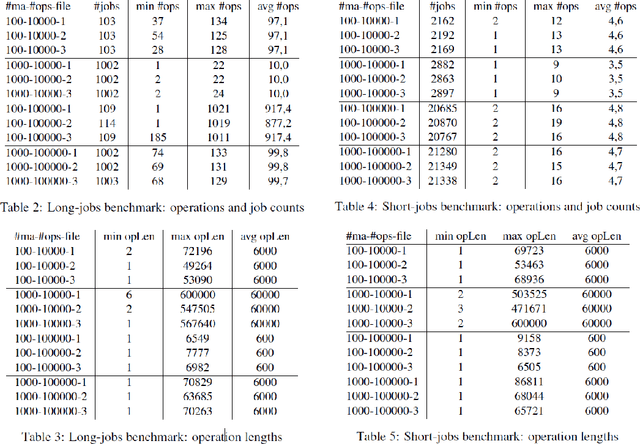
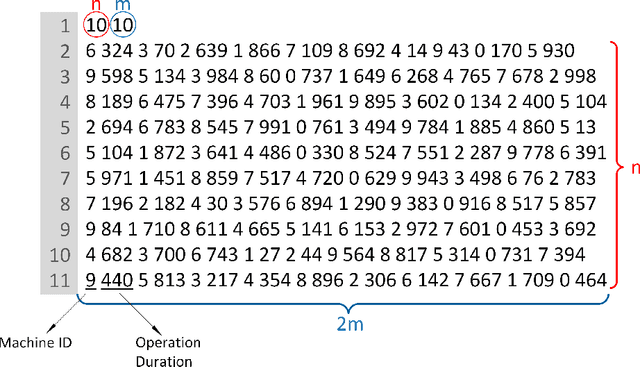
Abstract:This report contains the description of two novel job shop scheduling benchmarks that resemble instances of real scheduling problem as they appear in industry. In particular, the aim was to provide large-scale benchmarks (up to 1 million operations) to test the state-of-the-art scheduling solutions on problems that are closer to what occurs in a real industrial context. The first benchmark is an extension of the well known Taillard benchmark (1992), while the second is a collection of scheduling instances with a known-optimum solution.
The Scheduling Job-Set Optimization Problem: A Model-Based Diagnosis Approach
Sep 23, 2020
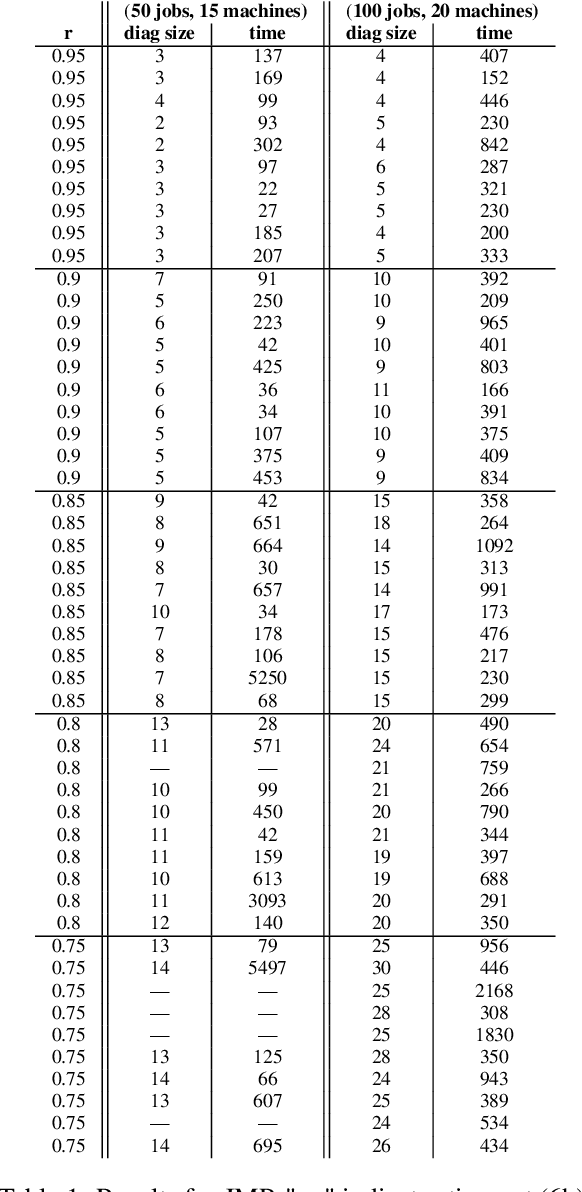
Abstract:A common issue for companies is that the volume of product orders may at times exceed the production capacity. We formally introduce two novel problems dealing with the question which orders to discard or postpone in order to meet certain (timeliness) goals, and try to approach them by means of model-based diagnosis. In thorough analyses, we identify many similarities of the introduced problems to diagnosis problems, but also reveal crucial idiosyncracies and outline ways to handle or leverage them. Finally, a proof-of-concept evaluation on industrial-scale problem instances from a well-known scheduling benchmark suite demonstrates that one of the two formalized problems can be well attacked by out-of-the-box model-based diagnosis tools.
Google vs IBM: A Constraint Solving Challenge on the Job-Shop Scheduling Problem
Sep 18, 2019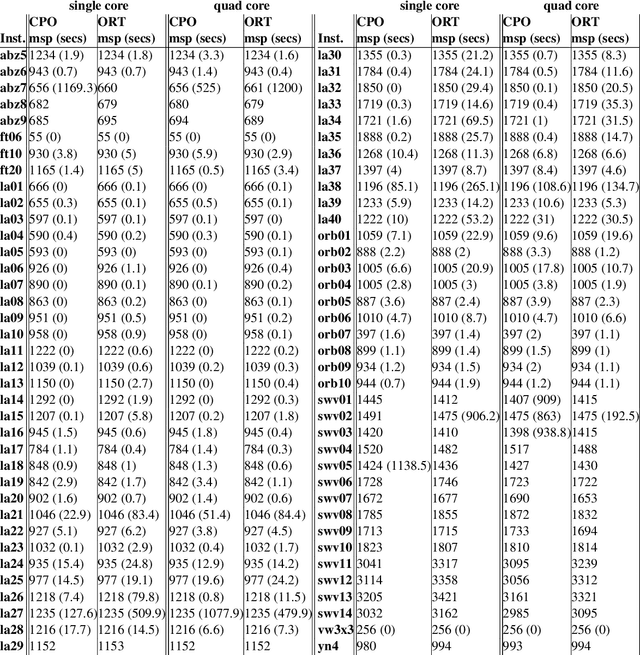
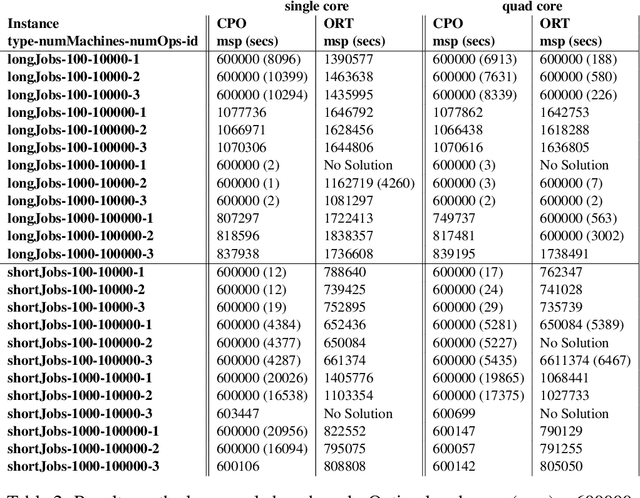
Abstract:The job-shop scheduling is one of the most studied optimization problems from the dawn of computer era to the present day. Its combinatorial nature makes it easily expressible as a constraint satisfaction problem. In this paper, we compare the performance of two constraint solvers on the job-shop scheduling problem. The solvers in question are: OR-Tools, an open-source solver developed by Google and winner of the last MiniZinc Challenge, and CP Optimizer, a proprietary IBM constraint solver targeted at industrial scheduling problems. The comparison is based on the goodness of the solutions found and the time required to solve the problem instances. First, we target the classic benchmarks from the literature, then we carry out the comparison on a benchmark that was created with known optimal solution, with size comparable to real-world industrial problems.
* In Proceedings ICLP 2019, arXiv:1909.07646
 Add to Chrome
Add to Chrome Add to Firefox
Add to Firefox Add to Edge
Add to Edge